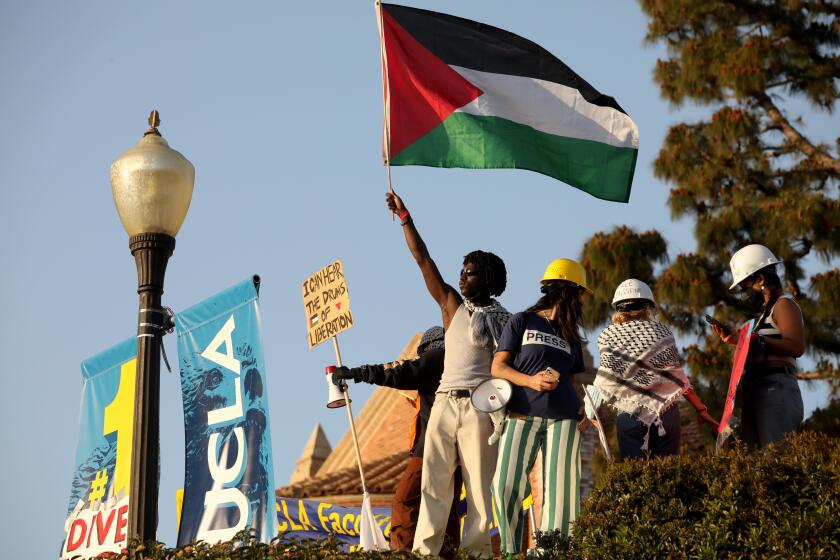Religion: Separate but Don’t Destroy : Kennedy’s opinion avoids risk of extremism
Two kinds of clarity in relations between religion and the state are easily attained. One is the clarity of a state establishment of religion, in which civil government also governs the religion. The other is the clarity of a state disestablishment of religion, in which the civil government officially endorses and supports atheism.
The 1st Amendment of the U.S. Constitution--”Congress shall make no law respecting an establishment of religion, or prohibiting the free exercise thereof”--lacks the clarity of those extremes. Historically, as so often in American law, it is a practical compromise. The Founders themselves were British, and the establishment of the Church of England was what they repudiated by the no-establishment clause. But their guarantee of free exercise is a matching repudiation of the antagonism toward religion that characterized the French Revolution, which was still shaking the world in the year when the Bill of Rights was debated and adopted. Three days before approving the establishment clause, Congress appointed a paid chaplain to open each session with a prayer, a practice that continues to this day.
Since the adoption of the 1st Amendment, the perennial challenge of the U.S. Supreme Court has been the somewhat muddy, practical one of determining when a given action by the state went so far that it threatened to establish a religion or, by contrast, so far in the other direction that it threatened to abridge the free exercise of religion. In many conservative circles, the view has gained currency that the legal tests that the Warren and Burger courts had imposed to protect against establishment of a state religion impinged on free exercise. The hope was widely entertained that a more conservative court, while not eliminating the wall of separation between church and state, might relocate it to the benefit of free exercise. School prayer was the form of free exercise for which that hope was most widely entertained.
On Wednesday, in a 5-4 decision written by Justice Anthony M. Kennedy, the Rehnquist court seemed to dash those hopes when it banned prayer not just in the classroom but even at graduation ceremonies. In so doing, the court reaffirmed the three practical tests the court adopted in the 1971 Lemon vs. Kurtzman decision. But if the result seems liberal, the legal philosophy behind it has a conservative ring. As Justice Kennedy put it, “A relentless and all-pervasive attempt to exclude religion from every aspect of public life could itself become inconsistent with the Constitution.” James Madison could have penned that line--and would endorse this decision.
More to Read
Get the L.A. Times Politics newsletter
Deeply reported insights into legislation, politics and policy from Sacramento, Washington and beyond. In your inbox three times per week.
You may occasionally receive promotional content from the Los Angeles Times.






